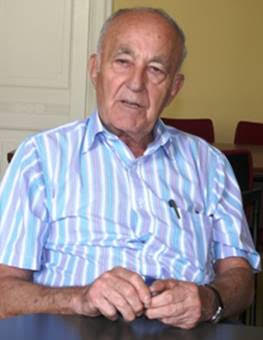
THE VOICE OF INTERNATIONAL LITHUANIA
|
VilNews has its own Google archive! Type a word in the above search box to find any article.
You can also follow us on Facebook. We have two different pages. Click to open and join.
|
Archive for March, 2013
- Posted by - (0) Comment
Associate Editor Vin Karnila:
My Lithuanian Easters –
in Massachusetts, USA
By Vin Karnila, Associate Editor
Thinking about Lithuanian Easter traditions transforms me back in time to when I was a young boy growing up in the Boston area of Massachusetts, USA. Being the son of a Scottish mother and Lithuanian father I had the great fortune of experiencing the wonderful traditions of not only the Lithuanian people but that of the Highland Scott‘s as well.
While along with the Lithuanian Christmas traditions we practiced many of the Scottish customs for Christmas and New Year as well but Easter is seemed was a time for the traditions of our Lithuanian ancestors. These were the traditions the Karnila family took with them from our ancestral home in Lithuania, the village of Guronys.
- Bookmark :
- Digg
- del.icio.us
- Stumbleupon
- Redit it
- Posted by - (0) Comment
Associate Editor Vin Karnila:
My Lithuanian Easters –
in Massachusetts, USA
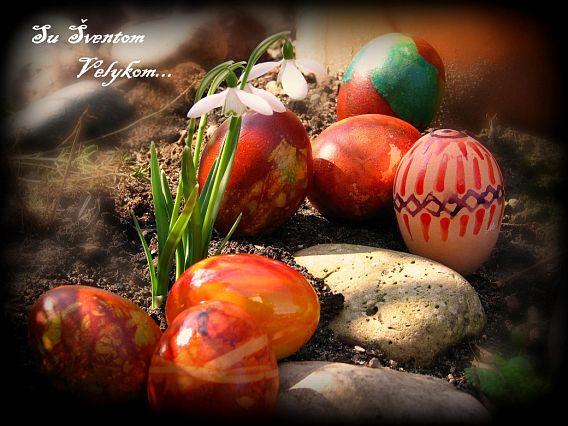
By Vin Karnila, Associate Editor
Thinking about Lithuanian Easter traditions transforms me back in time to when I was a young boy growing up in the Boston area of Massachusetts, USA. Being the son of a Scottish mother and Lithuanian father I had the great fortune of experiencing the wonderful traditions of not only the Lithuanian people but that of the Highland Scott‘s as well.
While along with the Lithuanian Christmas traditions we practiced many of the Scottish customs for Christmas and New Year as well but Easter is seemed was a time for the traditions of our Lithuanian ancestors. These were the traditions the Karnila family took with them from our ancestral home in Lithuania, the village of Guronys.
While occasionally we would visit members of my mother’s family on Easter, most often on Easter we would go to the home of my father’s sister, Ana (Karnilytė) Savanovich. This I think was by no small coincidence since months before Easter my brother and I would plead to our parents that it was an absolute requirement that we celebrate Easter at Aunt Ana’s house – as you read on you will understand why!!!
When we arrived at Ana’s house my brother and I were greeted with a basket of decorated Easter Eggs and sweets. This was of course, in true Lithuanian tradition, AFTER we had we had completely passed through the door and were standing inside the house and had also gone through all the kisses, hugs and pinches on the cheeks (from Ana) and handshakes from her husband John. As my brother and I started to go to work on the sweets and admire the eggs next came another big treat. Ana would come out with a tray of freshly baked, still warm cookies baked by you guessed it – the Velykos Kiškis!!! Now I guess the story behind the cookies got changed a bit on its trip across the Atlantic Ocean but it seems that the Easter Bunny / A.K.A. Velykos Kiškis baked these cookies just this morning and brought them to Ana‘s home knowing that me and my brother would be there.

After enjoying ourselves on the sweets and cookies next came the what was probably one of the biggest events of the day – EASTER DINNER!!! I grew up enjoying Lithuanian traditional food but at Easter this was something completely different. Easter Dinner was the jack pot, the mother load, the meal to end all meals, the trip to the mountain top. Never at any one time were there so many Lithuanian dishes on the table at any one time. Remember on Chirstmas Eve there is no meat. For Easter there was every kind of meat you could think of. Roast pork, roast ham, roast chicken, roast anything you could possibly roast and maybe a few things you wouldn‘t want to roast. In addition blynai, dumplings, kugelis, salads of every variety you could imagine and of course mushrooms used in almost every dish. The table cloth was always white and always was adorned with some greenery. Now of course before we partook in this wonderful feast an egg was cut and a piece was given to everyone seated so that as we all ate of this egg we joined as a family and bonded our love and dedication to each other. I must mention that the cutting of the egg became an art form if we had the pleasure of being joined by uncles Kaziemiras (Charles) and Jonas (John) and aunts Marytė (Mary) and Alicija (Alice) and their families. To cut one egg into about thirty equal pieces is truly an endeavor. After the meal came an incredible assortment of cakes, pies and sweets. Oh, did I mention that to wash this all down Ana had made some homemade gira?

After stuffing ourselves to the max came some activities to work off all the food. It seems that the Velykų Senelė/Easter Grandmother had stopped by earlier that morning and left some beautifully decorated eggs for me and my brother. The problem was that she had hidden them outside and our task was to find them. As a very young child this was a little confusing because I thought it was the Easter Bunny’s responsibility to deliver all the eggs to everyone. So I kind of sorted things out and came to the conclusion that yes in fact delivering the eggs was the Easter Bunny’s job however the eggs used in the egg hunt was the responsibility of Velykų Senelė. As I got older we then understood that this was another wonderful tradition of our people. I can say one thing about Ana and John, when it came to hiding eggs they displayed some incredible imagination not to mention athletic ability. You would not believe what we had to go through to get some of these eggs!!! To be honest, I don’t know who had more fun, the children finding the eggs or Ana and John watching us.
After finding all the eggs or let me put it this way, after finding all the eggs we could find (I think after fifty years there are still some unfound eggs sitting around there somewhere) we went back inside. All the children counted up the eggs they had found and the one with the most received some sweets as their prize for being the best egg hunter.
What came next was to me the most special event of the day. Of everything we did this is what I most fondly remember of our Easter traditions. For every child Ana had made a specially decorated egg. She would go around and present each child with this incredible work of art. All the children had the same reaction. We would just sit there with our mouths agape and admire this wonderful creation. As you can imagine, it is difficult for young children to appreciate hand crafted beauty, especially little boys, but these eggs where so magnificent it truly got our attention. We would hold the egg in our hands and just stare at it in wonderful admiration. In addition to the eggs beauty we also were appreciating the love that aunt Ana had put in to making this egg for us but most of all, as we sat there admiring the beautiful Easter egg we, even as little children knew we were holding the tradition of the Lithuanian people and of Lithuania in our hands. I so vividly remember holding these special eggs in my small hands and saying to myself – This is Lithuania and I am Lithuanian.
I would please ask you to understand that what I wrote of is not about me and not about the Karnila family. What I wrote about was a Lithuanian family, Lithuanian traditions and Lithuania. For every people, their traditions and customs are not only an important part of their past but also an important part of their future. This is so true of Lithuania. The preservation of beautiful ancient traditions has been one of the things that helped the Lithuanian people remain strong and preserve their identity as a people and a nation through so many adverse situations. Unfortunately, every year some of these traditions tend to slip away one by one. While we still practice some of these traditions many have become just a memory.
I wrote this as an invitation to all our readers to write to us telling us about the beautiful Lithuanian Easter traditions that you remember from years gone by and also tell us of the traditions you, your family, friends and neighbors still practice to this day. It is our hope that in sharing these traditions with all our readers you will be reminded of some wonderful tradition from the past and this Easter and for many Easters to come you will again include these traditions in your Easter celebrations. We would also like to remind you that there are many people of Lithuanian nationality living around the world that are desperately trying to find out more about their heritage and about the culture and traditions of their Lithuanian ancestors. By sharing your traditions with all our readers it is very possible that a person, intensely proud of their Lithuanian ancestry, somewhere in the world this Easter will for the first time in their lives be able make some Lithuanian Easter traditions a part of their family’s celebration of the resurrection of Christ.
So dear readers, we invite you to please send to us some of the Lithuanian Easter traditions that are or were an important part of your family so that we can share them with Lithuanians around the world.
Su Dieva
Vin / Vincas Karnila
Associate editor
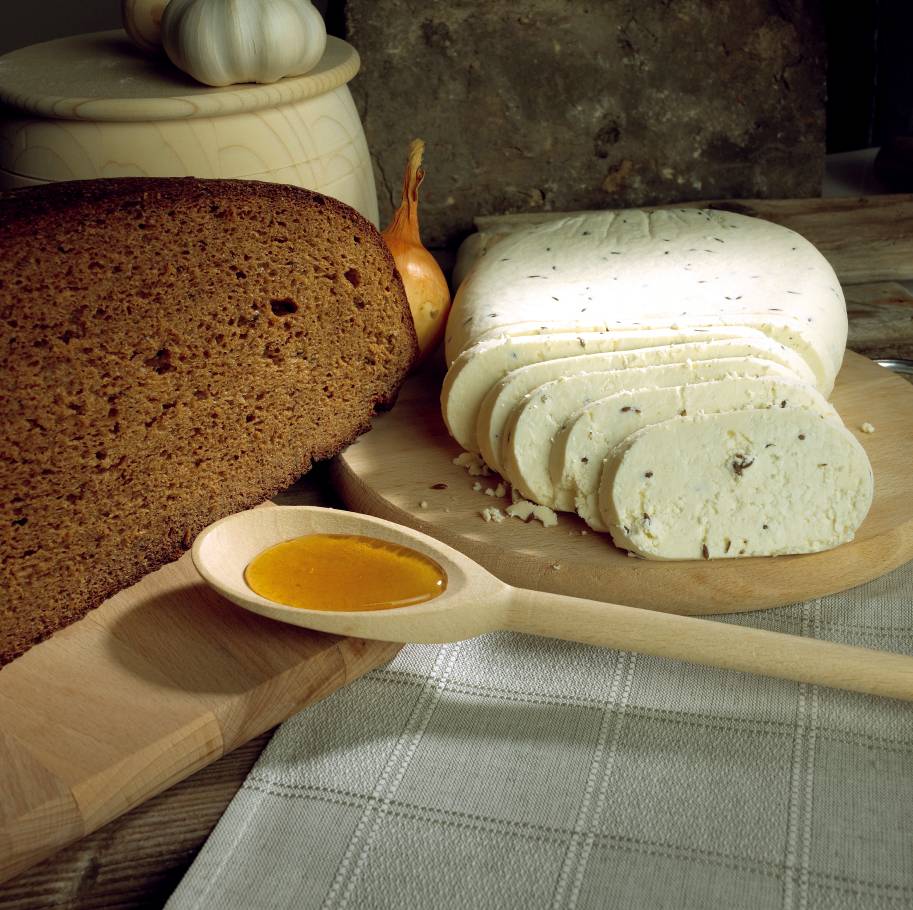
- Bookmark :
- Digg
- del.icio.us
- Stumbleupon
- Redit it
- Posted by - (0) Comment
Lithuanian Velykos (Easter) traditions
The word for Easter, Velykos, has been borrowed from Byelorussian and means "important day." The word is very accurate because Easter is the year's most solemn feast in Lithuania. Easter is not only the feast of Christ's Resurrection, but also nature's awakening from the winter's sleep.
The early Eastern morn, just before dawn, abounds with magical power. Much of this magic is concentrated in flowing water. Bathing in such water before sunrise prevents all boils, sores, rashes and other skin ailments. If it rains on Easter morning, it is necessary to stand bareheaded in the rain to ensure good growth. Small children who want to grow quickly are reminded of this.
As the sun rises on Easter morning, it "dances" swaying from side to side and changing colour: from green to blue, to red and then golden yellow. This phenomenon can be seen by rising before dawn and watching for the sun's first appearance on the horizon.
- Bookmark :
- Digg
- del.icio.us
- Stumbleupon
- Redit it
- Posted by - (0) Comment
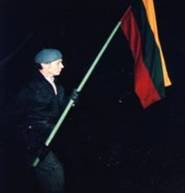
Making Bullets:
Take One California Girl add a Lithuanian Revolution and Stir
https://vilnews.com/?p=18866
Read the fascinating story of Daiva Venckus, written by our Associate Editor Vin Karnila.
Where can I get this book???
Well, this is the bad news – You can’t get it..
I’m not in the publishing business so I have absolutely no idea as to the logic these people use but I’ll try to put it in a nut shell and then let you figure it out. Daiva has shown her book to a number of publishers in the USA. Their reaction was – THEY LIKED IT!!!
So why don’t they publish it???
Their logic is this, they don’t want to publish a book that will basically be a one shot deal. They want to publish a book that will be followed by other books based on the same theme/topic.
What is even more puzzling and even exasperating is that she offered the book to a number of publishing companies here in Lithuania and they were completely unresponsive. For a Lithuanian company to be unresponsive is unfortunately not uncommon but for the life of me I don’t understand why a Lithuanian publisher would not be interested in a book that can be published in Lithuanian for the home market and in English for the worldwide market. There are very few books published here in Lithuania that have the potential be popular in the world wide market and when one is presented to a Lithuanian publisher there is no response – You figure it out???
Dears readers, if any of you are in the publishing industry or if any of you can understand this logic of not publishing a book you think is good because you want to have more books on the same topic to follow it please explain this all to me because this logic totally escapes me??????
__________________________
My advice would be to self-publish as an online book
Roe
I worked with Daiva's dad long ago, so knew her mom, and dad, since she was a baby. Back in 1991, her mom kept me up to date with Daiva's travel to Lithuania and her participation in the effort to kick out the Russians. We were happy to learn she was able to stay safe and return to the USA with a sense of accomplishment in an historic event. Insofar as publishing, I am aware the industry is fickle and always finds room to print trash like romance novels. My advice would be to self-publish as an online book - a friend recently took that approach, and it completely circumvents the publisher roadblocks. Also, by the way, a book on history is not "one of a series" as was told to Daiva, for example the Team of Rivals by Doris Goodwin is a one-off. Yes, Goodwin wrote other books, but not on the same topic. So another suggestion would be to find out who publishes history books, and stay away firms that publish items such as the Hobbit.
__________________________
Print the book, we need it especially nowadays for the younger generations who don't know what real tyranny can be
Ted
Heard the stories from my grandparents who came to America. They told stories of relatives who were left behind and suffered under the communist rule. My grandparents hoped for a free Lithuania but never really thought the Russians would leave short of a 3rd World War. Print the book, we need it especially now a days for the younger generations who don't know what real tyranny can be. Ruta Sepetys book "Shades of Gray" was a one shot presentation on Lithuania and it was a hit. Print the book, we need more encouragement fto love or our Lithuanian Heritage.
__________________________

Excellent article, Vincas! Daiva's story is full of amazing details of what was happening during the Lithuanian fight for re-independence! Her story is gripping and everyone needs to hear it. So many secrets in history revealed in her tales. The time is now because this generation needs to learn what happened in Lithuania so we can teach our children. History like this should never repeat itself!
Rima Raulinaitis
- Bookmark :
- Digg
- del.icio.us
- Stumbleupon
- Redit it
- Posted by - (0) Comment
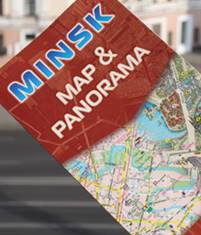
Minsk-Vilnius journey to become 30 minutes faster on 26 May
MINSK, 28 March (BelTA) – The journey time by train No.15/16 and No. 37/38 will reduce by half and hour and make 2.5 hours starting from 26 May, BelTA learnt from the press service of Belarusian Railways.
Specialists noted that this will be achieved thanks to optimization of border and customs control.
The details and terms of the Belarus-Lithuania joint project to reduce the Minsk-Vilnius journey time have been recently discussed at a session in Minsk. Taking part in it were representatives of Belarusian Railways, Lithuanian Railways, border and customs services of Belarus and Lithuania. The sides formalized a decision on optimizing border and customs control on trains No.15/16 and No. 37/38. Passenger screening on the Belarusian territory will be done on the route between Molodechno and Gudogai. In Lithuania the checks will be carried out at a special terminal at the Vilnius railways station.
The participants of the session discussed requirements to the rolling stock, train schedules and a possibility to launch additional trains between Minsk and Vilnius.
The reduction of travel time between Minsk and Vilnius down to 2.5 hours is the second stage of the project to reduce journey time between the capitals of Belarus and Lithuania. The first phase was completed in 2011. As a result the travel time between the capital cities of Belarus and Lithuania reduced from 4 hours to 3 hours.
The press service of Belarusian Railways informed that the passenger flow between the two countries exceeded 295,000 people in 2012, up by 51.7% against 2011. About 195,000 people travelled by train No. 15/16 in 2012, or 66.7% of all travelers going from Minsk to Vilnius and back. This means that this train is most popular with travelers.
- Bookmark :
- Digg
- del.icio.us
- Stumbleupon
- Redit it
- Posted by - (2) Comment
|
Lithuanian Velykos (Easter) traditions
The word for Easter, Velykos, has been borrowed from Byelorussian and means "important day." The word is very accurate because Easter is the year's most solemn feast in Lithuania. Easter is not only the feast of Christ's Resurrection, but also nature's awakening from the winter's sleep. The early Eastern morn, just before dawn, abounds with magical power. Much of this magic is concentrated in flowing water. Bathing in such water before sunrise prevents all boils, sores, rashes and other skin ailments. If it rains on Easter morning, it is necessary to stand bareheaded in the rain to ensure good growth. Small children who want to grow quickly are reminded of this. As the sun rises on Easter morning, it "dances" swaying from side to side and changing colour: from green to blue, to red and then golden yellow. This phenomenon can be seen by rising before dawn and watching for the sun's first appearance on the horizon. Earlier everyone went to the Resurrection services. If on the way you passed a woman, you'll have an accident. To avoid calamity it was necessary to turn around, return home and then take another road to church. In Lithuania the Easter morning procession was usually conducted around the church. It was very solemn: church flags were held high, girls strewed flowers, the choir and all the people sang, alternating with a brass band, and the church bells pealed loudly. Three turns were made while singing the Lithuanians' favourite Easter Hymn Linksma diena mums prašvito (A Happy Day Has Dawned for Us). After the services, a blessing was made over the Easter food which was arranged in baskets decorated with greens and placed on the altar-rails. At the conclusion of the liturgy in Church, the people hurried home. In fact, all large and small roads, every path was the scene of races: whoever arrived home first would be successful all year and would complete all work on time. Even persons walking tried to pass those ahead and reach home first. It is not surprising that accidents happened during such races. Perhaps that is why it was said that a woman met on the road brings disaster (someone had to be blamed!).
At home, Easter breakfast was eaten. The meal began when the homemaker peeled a blest Easter egg, cut it and gave a piece to every member of the family. This was done so that peace and love would always reign within the family and everyone would live in harmony. Afterward, a variety of other dishes were consumed: meat, sausages, and cakes. On Easter it was necessary to eat well and to satiety, to "recover from Lent" because of the fast all through Lent. If the area had poor families with no Easter food, their neighbours shared what they had and brought the disadvantaged families everything they need to be satisfied and happy. Children hunted for hidden Easter eggs left for them by the Velykų Senelė (Easter Granny) or Velykė. Bunnies who painted Easter eggs were also a familiar fixture, but they were only helpers for theVelykų Senelė. Very early Easter morning they loaded Easter eggs into a beautiful little cart pulled by a tiny swift horse. The Velykų Senelė used a sunbeam as a whip. Sometimes the bunnies themselves pulled the cart laden with Easter eggs. The Easter Granny travels around the country, stopping in every child's yard to leave eggs in baskets placed or hung for that purpose. When they awake, good children find beautifully decorated Easter eggs (and in. more recent times even sweets). Bad children only find a single plain completely white egg. If this happens, the child is disgraced. His friends and family laugh at him. Sometimes bunnies accompany the Granny and help her distribute the Easter eggs. They are kept busy not only before Easter and on Easter day, but all year round baking cookies for children. When parents leave their children behind, they promise to bring them a gift, bunny cookies. Upon their return, they tell the following tale: "I'm walking through the woods (or orchard or past the bushes) and I see a bunny wearing an apron and hat, his sleeves rolled back, taking sweet-smelling cookies from an oven. I say to him: 'May the Lord help you!' He answers, 'Thank you, thank you. Would you like a taste? They're still hot.' Of course, I dol They smell so good, they look so good. . ." In the meantime the-child can hardly control himself: "What kind of oven was it?" "Tiny, pretty." "Did you get to taste any cookies?" "Yes, of course." "Did you bring me any?" At this point, the father, mother or other family member pulls out the goodies and distributes them to the children who are extremely impressed not only by the bunny cookies but also by the baking method itself. They can practically see the flushed, rushing bunny mixing the dough and stoking the oven. How wonderful that morn or dad just happened to be passing at the very time the cookies were done! Bunny cookies are famous throughout Lithuania. It would be good to remember them outside Lithuania as well. A variety of games were played with Easter eggs. The simplest is an egg-breaking contest. Two players face off, each holding an Easter egg and hit each other's egg. The one whose egg remains intact is the winner. The egg is held in the fist so that only its tip protrudes. The other player hits it with the tip of his egg. If the egg breaks on the side, the impact was wrong and the owner of the broken egg is not considered the loser. The winner claims the broken egg. After the game the number of eggs won was tallied. It was of paramount importance to have a hard-shelled egg that withstands breaking. In selecting a strong egg, the contestant taps an unboiled egg against his teeth. If the sound is clear and sharp the shell is hard: if dull and muffled, the egg will break quickly; it's not even worth colouring. Some smart alecks devised an "unbreakable" egg. It was made this way: a raw egg's shell is pricked at both ends. A thin straw is inserted into one end and used to blow out the contents through the opposite end. Another straw with one end shaped as a funnel is then placed into the hole and melted pine or fir sap is poured until the egg is full. If the sap does not flow smoothly, a helper inserts a straw into the opposite hole and draws the air out of the egg. After the egg is filled with sap, the holes are carefully concealed and the egg is then tinted along with others. It weighs about the same as a real boiled egg. Sometimes the empty shell was filled with melted sugar, but it was much heavier and the sugar hardened unevenly making it more difficult to play. Of course, if caught, the cheat was punished. The direst penalty was to eat the "Easter egg."
Another amusing Easter game was egg rolling (pictures above). This was best done outdoors, but also could be played in a larger room. A trough is made from pieces of wood or bark to measure about 10 cm long and 15 cm wide (it can also be much longer). One end of the ramp is propped up to produce a downward incline, but not too steep. A small circle is drawn at the bottom of the slope for the playing field into which the eggs will roll. When the game is played outdoors, the trough must be placed on a smooth surface because the eggs will not roll in the circle if there are pebbles, high grass, etc. When played indoors, the surface of the circle must not be too slippery for the eggs will roll out. A low wall or enclosure may be built around the circle. When all the preparations are completed, the players begin the contest. Four to eight persons play. Each uses an egg of a different colour to tell them apart. Eggs may also be marked in different ways. The egg is let down the incline. After one contestant finishes, the next rolls his egg aiming to reach the other's egg and tap it. If the egg hits the first one, its owner wins and takes the first egg. The eggs are rolled down the slope in turn. A contestant who wins egg rolls out of turn until his egg fails to hit another. Another player then takes his egg from the circle and rolls it. Eggs used in the rolling contest may already be cracked (for instance, already used and won in an egg-breaking contest), but their sides should be intact because eggs with cracked sides do not roll well. The trough may be straight or curved in different ways to make the eggs roll longer. The slope may also be made of cardboard from an old box, plastic or any other material strong and rigid enough to support the weight of an egg. A simpler egg-roll is done without a trough. A circle at least one meter in diameter is traced on a smooth surface. Barriers or enclosures are placed around the circle to keep the eggs from rolling out (crumpled newspaper may be used). A gate is kept open on one side through which the players push their eggs. The first player is chosen by lot. He rolls his egg into the circle. The second player attempts to roll his egg so that it will tap the first one. The game is played like the one using an incline, but in this case the eggs are rolled into the circle by hand with the player kneeling or sitting on the ground. Because the egg does not roll down a ramp, the entire game depends on the contestant's skill, how he rolls his egg into the circle. If the egg is rolled so hard that it leaves the playing field, the contestant loses his turn. In the past, only young men and adolescents played egg-rolling contests. It was not proper for girls to do so. They provided their beaus with eggs, cheered the contestants on and guarded the eggs won. Today mostly children (boys and girls) roll eggs. If guests arrive on Easter, they are given Easter eggs as gifts. The guests also bring an Easter egg for each family member (or at least the hosts and sweets for the children). Easter morning children go "egg begging" but only to the homes of acquaintances, close neighbours or godparents. When they arrive, they say hello and stand silent at the door. It is quite obvious to everyone that an Easter egg is required. The children politely say thank you, wish a Happy Easter and continue on. When Easter was celebrated for three days, no one went visiting the first day; it was unacceptable to intrude upon people on such a holy day as if someone had thrown you out of your own home. The first day of Easter was said to be dedicated to God, people were expected to conduct themselves seriously and quietly, spend time with their family, eat well and "recover from Lent." The second day was for recreation, visiting friends and having company. The third day was devoted to relaxation. People slept late, recovered from all the merrymaking because work was waiting in the wings. For Easter, homemakers set out Easter dishes which remained on the table all day. When guests arrived, the women could then spend time with the company and did not need to work. The table was covered with a white cloth and decorated with greens or fruit tree branches (mostly cherry) which were cut and set in water several weeks earlier so they would bloom for Easter. (Easter lilies were unknown.) Greens were also attached to the tablecloth hem which hung down from the table. The table was laden with cold Easter dishes: baked ham, goose, suckling pig, a basket or plate full of Easter eggs, sweet cheese, bread, cakes, etc. Beer (mostly homemade), liqueurs and cider were served as beverages. Everyone who arrives to extend Easter greetings must be served. It was considered very impolite for the guest to refuse refreshment. Everything had to be at least sampled and the cook praised, else she would feel insulted.
The young who behaved with such solemnity all during Lent wanted to have fun on Easter. They assembled at a larger house to sing and dance. This usually was done in late afternoon or evening. During the day, it was popular to swing in swings and sing. If the Easter weather was warm and fair, the swings were hung from a tall tree so the young could swing higher. Given inclement weather, the swing ropes were tied from barn rafters. People swung not only for the fun of it but to ensure a good harvest next summer, just as on Shrove Tuesday. While swinging, the girls and young men sang special songs. A group of young men assembled to practice singing Linksma diena mums prašvito (a popular Easter hymn), some other songs and make the rounds. These are the so-called lalauninkai (from lalauti — to talk loudly and much). In many other countries, such as the United States or England, carolers make the rounds before Christmas singing Christmas carols and songs. They may be compared to Lithuania's Easter lalauninkai. These singers are usually unmarried men sometimes accompanied by a fiddler or harmonica-player. Upon arriving at a house, they first sing an Easter hymn; convey their Easter wishes and then carol. The homemaker gives them cake, sausages, Easter eggs while her husband serves liquid refreshments. The Easter eggs are handed out by the young girls of the household. Although most homes were visited, it was predominantly those with unmarried girls. They were told before Easter that the singers would arrive and tried to make beautiful Easter eggs. This was a perfect opportunity to display their talents and show off before the other village girls. It sometimes happened that the singers refused to accept an Easter egg judged to have a poor appearance and this was considered a major disgrace. The songs these carollers sang were noted for the refrains repeated after every verse. The verses were short, usually composed of only two lines. The refrain had no connection with the song's overall content. These singers were especially well-known in Dzūkija which is famous for similar types or harmony songs. On the hill a pear tree stood; under the pear tree lay silvery dew. . . The refrain — vynelis vyno žaliasai — refers to new wine. It is not necessary for lalauninkai to sing the customary ditties, other songs may be selected. On Easter, a person can learn the following summer's weather, about his personal happiness and gain protection against various pests if he knows what to do and what guesses to make. If he wishes to avoid seeing snakes all summer, he must avoid seeing a needle the first day of Easter. If an accident or calamity occurs on Easter, things will go wrong all year, the year will be unlucky. We've already mentioned the races home from church on Easter morning: anyone who arrives home first will be first to complete all work, everything will go well for him (especially work in the fields). Prayers are said to be really heard on Easter, it is therefore necessary to pray a great deal. If Easter morning is sunny and beautiful, the summer will be fair and the weather good; if it rains (or snows) bad weather is to be expected. The worst sign is to hear thunder on the first day of Easter but even this evil may be found to have a "silver lining." If thunder rumbles before leaves have sprouted (trees very rarely had leaves in Lithuania at Eastertime), thieves will have a difficult time plying their trade that year. If the sunset is very red, dangerous thunderstorms may be expected that summer. http://lithuanian-american.org/educate/tradicijos/velykos.html EASTER EGGS – MARGUČIAI
Basket of Lithuanian Easter eggs.
|
- Bookmark :
- Digg
- del.icio.us
- Stumbleupon
- Redit it
- Posted by - (0) Comment
Do you have an Easter
story you want to
share with us?

Easter is approaching and we would like to publish your very special stories from this important Lithuanian celebration, dear readers. We know many have their own, Lithuanian-related stories from childhood to tell. Send to editor@VilNews.com
- Bookmark :
- Digg
- del.icio.us
- Stumbleupon
- Redit it
- Posted by - (0) Comment
Making Bullets:
Take One California Girl
add a Lithuanian Revolution
and Stir
The true story of Daiva Venckus, a young American’s journey to her ancestral homeland during the collapse of the Soviet Empire.
- Bookmark :
- Digg
- del.icio.us
- Stumbleupon
- Redit it
- Posted by - (6) Comment
Making Bullets:
Take One California Girl
add a Lithuanian Revolution
and Stir
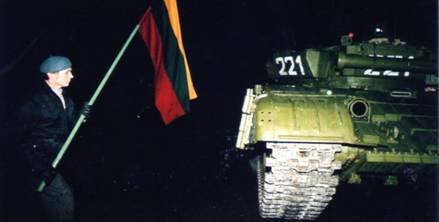
The true story of Daiva Venckus, a young American’s journey to her ancestral homeland during the collapse of the Soviet Empire.
Making Bullets is the inspirational story of a California-born woman who travels to her family’s homeland to learn about her heritage and becomes a part of Lithuania’s “Singing Revolution” against Soviet occupation.
On January 13th, 1991 fourteen peaceful protestors were killed and hundreds of others were injured by Soviet troops as the unarmed citizens stood, arm in arm, singing—protecting Lithuania’s Parliament building and the nation’s main communications tower. The lines held against the tanks that day. The Soviets didn’t succeed in their coup attempt but they didn’t end Lithuania’s drive for independence. Two days after the massacre 25 year old Daiva Venckus arrived in Lithuania, offering her services to help her beloved ancestral home. Eventually she began work as a press spokesperson for the Lithuanian Parliament. On August 19th, the Soviet army attempted another coup. While Gorbachev was held hostage, tanks surrounded the Lithuanian Parliament building where Daiva and others were barricaded for a final last stand.
Thankfully Daiva has written a book about her experiences during this period
The book is the true story of her life as the American-born daughter of Lithuanian immigrants who believed it was her sacred duty to preserve their language and culture until the day Lithuania could be free of Soviet rule.
Her fondest childhood memories were making ‘bullets’ (a nickname for traditional Lithuanian meat dumplings “koldunai”) with her great grandmother, “Sena Baba”. She often told her, “Tradition is our weapon.” Her days were filled with family stories about the homeland. Their lives centered on Lithuanian activities: folk dancing and singing, Lithuanian Saturday School, Lithuanian scouts and endless commemorative gatherings where everyone cried about the loss of the homeland. She didn’t know she was an American until her first day of nursery school when she realized that she didn’t speak English—it her first introduction to American society.
Eventually she grew tired of conjugating verbs fifty-two different ways, reciting 100 year-old poems and being forced to perform in nineteenth-century embroidered peasant clothes at the annual Potato Pancake Ball. What was the point to it all? She wanted to go to the mall. She wanted to go surfing. She wanted to hang out with her American friends. Eventually she rebelled and drifted away from the Lithuanian community.
As perestroika emerged in the USSR, the cause of freedom for Lithuania unexpectedly became her passion. She had connected to something bigger than herself - She had meaning in her life. The fact it was a cause her family had tried to force on her for all those years didn’t matter, because it had become her cause by choice.
She traveled to Lithuania on a student archeology visa in July of 1989. The land she only knew from Saturday School books and family stories finally came alive. But she also saw how her beloved Lithuania was damaged through decades of “Sovietization.” Revolution was in the air and she wanted to be a part of it.
In January of 1991, in the midst of the revolution, she bought a one-way plane ticket to Vilnius. She was determined to help even though she had no idea how. She was surprised the Soviets at the border allowed her to enter the country. She just showed up and asked, “Where can I help?” This question meant translating documents, a brief stint as an English-speaking TV newscaster, a music radio show host, an MC for a benefit concert, and eventually volunteering for the revolutionary freedom movement, Sajudis.
She wasn’t prepared for the food shortages, looking for toilet paper on the black market and the escalating Soviet military violence on the streets. As months went by, she dealt with the stress and uncertainty by taking her Czech motorcycle with a sidecar out for long rides in the countryside, much to the amusement of Lithuanians who had never seen a woman on a motorcycle before.
It was chance that caused her to be working inside the barricades of the Lithuanian Parliament as a press spokesperson. Her skill was being able to speak and write both English and Lithuanian fluently. The days she spent conjugating all those verbs in Lithuanian Saturday school back in LA was finally paying off. For several months it was a race against escalating Soviet military aggression to get information out to the West before the Iron Curtain shut down on Lithuania once and for all.
On August 19th, the Soviet military went in for the final deathblow to Lithuanian Independence. When Gorbachev had been taken hostage, kicking off the Moscow coup, she was 300 miles from Vilnius in a resort town on the Baltic Sea for a break from all the stress. The only way out was by ferry to the mainland. As I watched people pile up in buses and taxis, she knew she had to escape before she was trapped, so she jumped into the street in front of a taxi and offered the driver all her money to drive her to Vilnius. For five hours they negotiated Soviet checkpoints through torrential rain, searching for gas to complete the journey and listening to the radio about the Coup updates from Moscow. Lithuanian radio broadcasts were disappearing as the Soviets once again stormed local transmission towers.
She arrived at the Parliament building late in the afternoon and picked her way through a minefield as Soviet tanks approached the city. When the tanks arrived at Parliament close to midnight, everyone waited for the soldiers to fire the first shot before Lithuanians would fire back—using their outdated hunting rifles and Molotov Cocktails. No one was going to leave the building alive before Lithuania was free.
For three days and nights the standoff continued. Sleep deprived, her co-workers and her fielded calls from citizens reporting troop movements and fears, and she kept foreign journalists updated. Finally the hard-line Soviets relented and Gorbachev returned to Moscow. But that didn’t mean the fight was over. Although troops retreated from buildings, those that had been occupied in January, such as the TV tower where the massacre occurred, were still occupied. Only after Lithuania delivered an ultimatum to Moscow did those troops begin their retreat.
She arrived at the TV tower as the Red Army tanks began to withdraw. Thousands of Lithuanian citizens had gathered to witness the event. In a final act of defiance, Lithuanians turned their backs and stood silent as the tanks retreated. She was one of the first to enter the TV tower as she guided a BBC crew in to film the historic occasion.
After 50 years of Soviet occupation –Lithuania was finally, truly, free. Afternoons of “making bullets” with her great-grandmother flooded her memories, and the words of her family through the years filled her heart, “We preserve our heritage because we do not give up hope. Someday, with our own eyes, we’ll see Lithuania free once again.”
Not only did she get to witness history, she was a part of it.
You can check out her web site to get more insight to this remarkable and courageous lady
http://daivavenckus.com/mysite/
On the home page be sure to click “Making Bullets – The Book”
and in the drop down menu click “Making Bullets – Chapter One”
You will be rewarded by being able to read the entire first chapter of her book
I must say that I was quite impressed. Daiva’s writing style not only flows seamlessly but she also has the uncanny ability to make you feel a part of everything going on. I know that this may sound a bit cliché when some one says that a writer has the ability to make you feel like you are there but I can tell you that I DID FEEL LIKE I WAS THERE standing next to Daiva as all the events unfolded and in addition many times I felt like I was Daiva in that she has a way of expressing her emotions and reactions so that you can distinctly feel what she was feeling.
After reading the first chapter I am sure that your next thought will be the same as mine
Where can I get this book???
Well, this is the bad news – You can’t get it
I’m not in the publishing business so I have absolutely no idea as to the logic these people use but I’ll try to put it in a nut shell and then let you figure it out. Daiva has shown her book to a number of publishers in the USA. Their reaction was – THEY LIKED IT!!!
So why don’t they publish it???
Their logic is this, they don’t want to publish a book that will basically be a one shot deal. They want to publish a book that will be followed by other books based on the same theme/topic.
What is even more puzzling and even exasperating is that she offered the book to a number of publishing companies here in Lithuania and they were completely unresponsive. For a Lithuanian company to be unresponsive is unfortunately not uncommon but for the life of me I don’t understand why a Lithuanian publisher would not be interested in a book that can be published in Lithuanian for the home market and in English for the world wide market. There are very few books published here in Lithuania that have the potential be popular in the world wide market and when one is presented to a Lithuanian publisher there is no response – You figure it out???
Dears readers, if any of you are in the publishing industry or if any of you can understand this logic of not publishing a book you think is good because you want to have more books on the same topic to follow it please explain this all to me because this logic totally escapes me??????
Those of you that are familiar with many of the articles I have written for VilNews know that I am adamant in my endeavors to do my (very small) part in telling the world what Soviet Russia did to our country and to our people. It is virtually impossible to find a Lithuanian family that did not lose a loved one as a result of Soviet Russia’s oppression. This is the main aim of Daiva writing this book, she wants more people in the world to be aware of what happened here and it is not just about Lithuania. By making more people in the world aware of the atrocities committed hear it is the hope of people like Daiva and I that this awareness could possibly help to prevent tragic events like this happening again in Lithuania and in other parts of the world. This is why I am so very disappointed and I must say upset over the logic of these publishing houses.
I would really like to read the book. There have been many articles and stories written about the events that took place during this time but to my knowledge there have been no English language books written about these events. The fact that this book is written by a person that can share her first hand experiences with us makes it even more impressive.
By the way, when I said “first hand experiences” I mean first hand experiences. Daiva has been awarded the “Commemorative Medal of January 13” by the Lithuanian Government for her efforts in the struggle for Lithuanian Independence. This medal was awarded to her by the Presidential Decree of President Valdas Adamkus. A book doesn’t get more “first hand” than this.

Lithuanian Presidential Commemorative Medal of Jan 13
- Bookmark :
- Digg
- del.icio.us
- Stumbleupon
- Redit it
- Posted by - (0) Comment

Finnish tourists spend most money per day in Vilnius
A survey of visitors in Vilnius in 2012 commissioned by Vilnius' city municipality has revealed just how much visitors from different countries spend in Vilnius, reports LETA/ELTA, referring to the city's municipality.
The biggest spenders at LTL 635 (EUR 184) a day, are the Finnish, followed by Russians at LTL 497 (EUR 144) a day. Visitors from Russia and Belarus spend more of their money on tangible goods.
The average money spent by a tourist in one day was found to be LTL 275 (EUR 80), while total expenses over the duration of their stay averaged out to LTL 1,120 (EUR 325).
According to the survey, business-oriented visitors in Vilnius spent, on average, LTL 643 (EUR 186) a day. In 2012, tourists spent 35.3 percent of their expenses on housing accommodations, 22.8 percent on food, 22.7 percent on goods, 8.1 percent on transportation, and 6.8 percent on cultural and leisure activities, Vilnius Municipality's press office said today.
The survey reveals that most visitors from Lithuania's closest neighbors (Russia, Poland, Belarus, the Baltic States) have been to Vilnius before. Regardless, they tend to stay in Vilnius for a few days, and Vilnius remains a primary or at least important goal.
Vilnius as a whole was rated positively by visitors, with almost all criteria averaging at 4 or more out of 5. The city received its highest marks for residents' friendliness and hospitality, and for its taxi services (excluding those to the airport). Medium marks were given to the city's public toilets and to the public transportation information system. Polish visitors tended to rate Vilnius the highest, while French visitors rated it the lowest.
A total 81 percent of visitors indicated that it was either likely or very likely that they will return to Vilnius within the next 5 years. Almost all survey respondents said that they will recommend visiting Vilnius to others.
- Bookmark :
- Digg
- del.icio.us
- Stumbleupon
- Redit it
- Posted by - (0) Comment

Scandinavian option
for the Baltic States?
Dangerous undertows erode the stability
of Central and Eastern Europe
By Dr. Stasys Bačkaitis, P.E, CPSM
Board Member of the Central and Eastern European Coalition
Washington Representative of the Lithuanian American Council
Political and social stability of the Central and Eastern European (CEE) region is being slowly eroded by dangerous undertows. They tend to undermine the confidence and trust of the people in their governments and in the European Union (EU). The undertows, originating mostly in Russia, are sowing seeds of political, economic, energy and ethnic discontent as a way of gaining influence in and dominance over the countries that were once controlled by the USSR.
But history doesn’t have to repeat itself, say scholars, government officials, and foreign affairs analysts from a whole host of European and NATO countries.
- Bookmark :
- Digg
- del.icio.us
- Stumbleupon
- Redit it
- Posted by - (3) Comment

Scandinavian option
for the Baltic States?
Dangerous undertows erode the stability
of Central and Eastern Europe
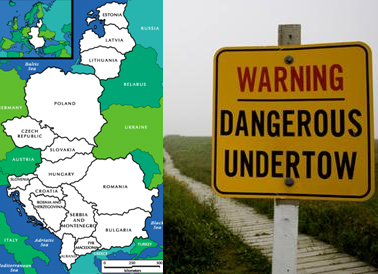
By Dr. Stasys Bačkaitis, P.E, CPSM
Board Member of the Central and Eastern European Coalition
Washington Representative of the Lithuanian American Council
Political and social stability of the Central and Eastern European (CEE) region is being slowly eroded by dangerous undertows. They tend to undermine the confidence and trust of the people in their governments and in the European Union (EU). The undertows, originating mostly in Russia, are sowing seeds of political, economic, energy and ethnic discontent as a way of gaining influence in and dominance over the countries that were once controlled by the USSR.
But history doesn’t have to repeat itself, say scholars, government officials, and foreign affairs analysts from a whole host of European and NATO countries. They have been meeting over several past years to not only support the high degree of momentum these former Soviet occupied countries have maintained in working together to realize a range of shared regional priorities and initiatives, but also to address concerns to potential threats before they become problems. While the region has attained considerable cohesion, significant challenges remain and new ones have emerged from disagreements and diverging perspectives on threats to security, the Euro-zone crisis, relative importance within the EU, and revival of submerged historical-political friction between some of the countries. Furthermore, resurging Russia and its aggressive political as well as military posturing is creating anxiety in the CEE region and particularly serious in the Baltic countries. This paper highlights some of these issues addressed in several important conferences during the last couple years and discusses alternatives that could possibly lead to some realignment of power structures within the region.
The
conferences
The
Center for European Policy Analysis (CEPA), held in Washington a Strategy Forum
on September 20-21, 2012, to discuss U.S. strategic policy regarding Central
Europe. Among the participants, presenters included several undersecretaries
from the UNITED STATES government, presidents from several U.S. Think Tanks, officials
from the U.S. Foreign Relations Council, the Minister of Foreign Affairs of the
Czech Republic, heads of the departments of foreign affairs of Poland, Hungary,
Slovakia, Croatia, Slovenia, Romania, a number of ambassadors and important
scholars of political affairs of numerous countries throughout the world. This
forum was preceded by a Conference on "Transatlantic Relations" organized
by the Washington based Atlantic Council on September 11, 2011. The Conference
addressed the need for creation of the Baltic-Scandinavian alliance (NB8) and
its benefits to the security of the entire Baltic Sea region and particularly
the Baltic States. A similar topic was discussed on October 9, 2012 at the international
conference organized by the University of Vilnius in cooperation with the Swedish
Atlantic Council and the Swedish Academy of Military Science.
Reflections
on discussions and their findings
The ongoing economic crisis and the threat to
"euro’s" survival as the
single currency is shaking the
foundations of the European integration
project, influencing relationships and shared aspirations of the EU member
nations, and significantly
affecting the image and future prospects of CEE countries. Surprisingly, these changes
may also alter the symbolic perception
of the geography of the CEE region from the Western European perspective. The economic crisis in Europe has shown that political and
economic viabilities of CEE countries
are no longer a drag on beneficial cooperation within EU.
The economic downturn has by now significantly reduced international
ambitions of the Brussels based EU bureaucracy, and at the same time has greatly
diminished illusions of grandeur of some CEE countries. All these lead to more balanced policies among all EU countries.
One of important developments in the European debt crisis and its effect on EU economy is that for the first time in more than six decades, the CEE region is not seen as a symbol of instability and inefficiency, and therefore, not a major threat "to the framework of the civilized European Community". This change in perception was brought about by the faltering economies, major social unrest, unemployment and inability of dealing with financial problems by peripheral countries of Southern Europe.
Surprisingly, some of the new northern EU member countries, such as Poland, the Czech Republic, and the Baltic States, suddenly showed up as exemplary hardworking, disciplined and stable. “At least for now, this northern region seems to be finally starting to replace a well entrenched image of the west European citizenry that east of the Elbe begins the dark side of the European continent”, remarked assistant director Jan Havranek of the Czech Ministry of Defense at the CEPA conference
Such an altered image will remain in the long-term, if the CEE region will be able to continue successfully managing its economy, energy, finances, its social affairs and engage constructively in EU policies. Until 2004, the CEE region expended all efforts to distance itself from the communist past in order to join the North Atlantic Treaty Organization (NATO) and the European Union. It succeeded in this. At the same time, the economic crisis in the southern EU region helped to highlight differences between the various EU regions such as income levels, productivity of the working sectors, infrastructure and cultural gaps, and social responsibility. Noted examples might be comparisons between Poland and Spain, the Baltic countries and Greece, etc.
Seeking common positions
Now,
more than since joining the EU, national and personal political ambitions of
some of the leaders of several CEE countries have hindered the establishment of
common positions on key issues within the EU agenda. The region’s countries did
well when they had to follow the guidance and directives of the EU. However,
reaching agreements by themselves on common CEE regional issues were up to now rarely
successful. Even most vitally important, but logically simple issues, succumb
to seemingly insurmountable obstacles. For example, Lithuania chose to build a
Liquid Natural Gas (LNG) terminal by itself, rather than wait for the agreement
to build a EU funded common terminal serving all of the Baltic countries; Latvia
and Poland are delaying the construction of Via Baltica which is vitally important
for rapid surface transportation into western part of the EU; Latvia decided to
expand rail links to Russia rather than giving priority to the construction of
Rail Baltica (a European rail connection in south-north direction through the
Baltic states and Poland); Lithuania is prolonging disputes with Poland over
use of the letter “w” in Lithuania’s passports, etc. The region is also widely
divided regarding the European Monetary Union (EMU). Estonia upon implementing
drastic economic and financial reforms rushed to join the EMU, while the Czech
center-right government and its president Klaus Vaclav boasted about the wisdom
of keeping the country out of “euro”, said prof. Petr Suchy of the Masaryk
University’s International Relations and European Studies Department. While
Poland is striving to become the region’s leader in the EU corridors in
Brussels, the Czech Republic and Hungary have at times become negative, sniping
at Poland’s ambitions, and often challenging proposed EU policies. The Hungarian Foreign Minister
János Martonyi said in Berlin in November 9, 2012, “Hungary has a
"vested interest in a strong Euro-zone but will only support its
transformation if its members are allowed to take their own path and the zone
as a whole remains open to applicants wishing to join it”.
Because
of inability by CEE countries to reach consensus on some key issues, the region
is not able receive appropriate attention and weigh-in with sufficient influence on matters of international
importance in Brussels, Berlin or
Paris. Due to different national political ambitions, the voice of the
region at the EU is almost inaudible,
even though in terms of the size of the population, it could equal at a minimum that of France or even Germany.
Unlike dissent regarding closer political integration and monetary union of the EU,
the CEE regional cooperation is most visible at the technical level, i.e. on security and defense issues, scientific and cultural projects.

Ed.
Lucas of the Economist magazine noted
that the European economic crisis has developed, particularly in the
Southern region of the EU, into wholesale distrust of EU
institutions.
Ed. Lucas of the Economist magazine noted that the European economic crisis has developed, particularly in the Southern region of the EU, into wholesale distrust of EU institutions. As a result, the self-inflated bubble of the EU as a political and military superpower just vanished. Consequently, the European security and defense ambitions are now much more realistic. The economic crisis has led to search for cost savings, pooling and sharing in defense projects, joint military developments of more modest capabilities with the aim to contribute to NATO’s international security capabilities. To be loyal members of NATO and to participate in deeper EU integration are no longer mutually exclusive goals.
Changes in NATO and EU defense
concepts
Unlike in the
past, NATO and EU now accept the formation of separate regional defense
subgroups which can naturally grow, strengthen and assure their own security,
defense, environmental, and energy interests, particularly with more modest support
of such efforts by the U.S. Poland is trying to construct such a subgroup
based on Visegrad countries’ participation. The Nordic countries consisting of
Denmark, Finland, Iceland, Norway and headed by Sweden, aim to include in its block
the three Baltic countries (Estonia, Latvia, and Lithuania).
Involvement in the Nordic block is less complicated to Latvia and Estonia, because of their affinity to the Protestant ethics and almost a thousand years contact with Germanic and Scandinavian cultures. In contrast, Lithuania’s religious and cultural backgrounds are closer associated with those of Poland. Moreover, Lithuania shares a common border with Poland. Its land transport to Western Europe is through Poland. Although it can connect to Western Europe through the Baltic Sea, the seaway is not an efficient and sufficient substitute for vehicular and rail transport.
Lithuania in Poland’s and Russia’s shadow
Lithuania, according to its geographic proximity and cultural and religious
similarities, was inclined up to now to work closely with Poland. However, in
the last several years, relations with this “‘strategic” partner have begun to
deteriorate. The tragic death of President Lech Kaczynski and many of his cabinet
members in the 2010 plane crash has brought about significant changes in
Poland’s political orientation. The new government has assumed a role of
supremacy in the region and began to look down not only on Lithuania, but also on
its smaller Visegrad partners. Poland began to see itself as a decisive player
in Central and Eastern Europe and of parallel importance to France and Germany
with a deciding voice in shaping the future of Europe.

The Polish government has assumed a role of
supremacy in the region and began to look down not only on Lithuania, but also
on its smaller Visegrad partners. Poland began to see itself as a decisive
player in Central and Eastern Europe and of
parallel importance to France and Germany with a deciding voice in shaping the
future of Europe. (Polish Prime
Minster Donald Tusk is pictured above at the Nobel Prize ceremony with German
Chancellor Angela Merkel and French President Francois Holland.)
While Lithuania is seeking recognition from Poland by acknowledgement of partnership at equal terms, the deterioration in good neighbor relations offers at this time no bright prospects for the future. The post Kaczynski government’s friendly flirtation with Russia, has apparently diminished Poland’s concerns towards security of the Baltic States. They appear to be left to fend for themselves visa-vi Russia. This Polish attitude is not expected to change in the near future unless the current government is forced to modify its attitude either by some external events or by a policy change of a new government. Similar concerns have been voiced also at the above cited CEPA Conference by the Czech, Slovak and Hungarian speakers noting of difficulty to find in many instances a common language with Poland. As a result of deteriorating relations with Poland, and the U.S. showing less interest in the European region, Lithuania’s political attention began to drift towards improvement of relations with Russia and neighboring Belarus, and the establishment of a much closer collaboration with the Nordic-Scandinavian block.

While
improvement of relations with Russia and Belarus is important, the Baltic
States nevertheless cannot close their eyes as Russia is rapidly modernizing
and strengthening its armed forces and continues threatening military exercises
near their borders. (PICTURE: A military truck
carries sections of Russia’s new
S-400 anti-aircraft missile system).
While improvement of relations with Russia and Belarus is important, the Baltic States nevertheless cannot close their eyes as Russia is rapidly modernizing and strengthening its armed forces and continues threatening military exercises near their borders. At the same time, the Baltic States must take into account that a large part of their economic well-being depends on trade with and transit through Belarus and Russia (“Lithuania’s Role in the Northern Distribution Network”, Eurasia Daily Monitor February 1, 2013). For example, Lithuania’s Department of Statistics reports that 25% to 30% of Lithuania's exports are to these countries, and even a larger proportion is imported from them. Transit of cargo through territories of Belarus and Russia into Asian countries depends on the willingness, particularly Russia, to allow the Baltic countries’ transport companies to use their road and rail infrastructures. Similar to Latvia’s and Estonia’s seaports handling substantial Russian cargo, Lithuania’s port of Klaipeda (Klaipeda port authority information) transships more than 12 mln. tons per year of Belarus cargo of a total of 36 mln. tons handled yearly by this port. Lithuania earns from Belarus over 75 litas for each handled ton of cargo. Accordingly, the port of Klaipeda receives for these services from Belarus alone about 1 bln. litas. Thus Lithuania has little choice than to set its relations with Russia and Belarus based on pragmatic economic interests without compromising its sovereignty. According to parliamentarian V. Gapšys "In dealing with these countries we must be smart and weigh every word we say, remembering that the neighbors can interpret any of our expressions in their own way with long lasting consequences to follow and many years needed to mend them.”
Nordic Countries: assured security
or illusion?
In view of Poland’s newly adopted indifference towards the future of the Baltic
States and uncertainty of its future political direction as well as aggressive military
posturing of Russia and Belarus at their borders, Lithuania is turning for
security purposes towards closer affiliation and possible alliance with the
Nordic block. While an effective alliance would be very desirable, it is
fraught with distrust of Sweden’s sincerity to come to the aid of the Baltic
States in the event of external aggression. It arises from the fact that Sweden
neither helped Finland to defend itself when attacked by Russia in 1939, nor protested
the invasion and subsequent occupation of the Baltic States by the Soviet Union
in 1940 and for nearly 50 years thereafter. While championing human rights
issues in the United Nation’s corridors during post World War II years, Sweden
did not voice any concern about the terror, mass annihilation and fate of the Baltic
people inflicted by the Soviet Union. Even after the Baltic people began their
quest for independence in late 1980s, Sweden was a silent bystander for several
years as the struggle continued against the Russian occupation. Only after the
Baltic States restored their independence, Sweden’s financial institutions
began a massive inflow into the Baltic countries

According
to the Swedish reserve Major General K. Neretnieks, Sweden has begun to realize
that its own security is no greater than that of the entire Baltic and Nordic
region. Sweden came to the conclusion three years ago that its security is
inseparable from the security of their neighboring countries. As a result,
Sweden began to change its position on neutrality and entertain thoughts
on how, in the event of military crises, it could help
their neighboring Baltic countries.
As the U.S. begins to focus its attention away from Europe, and as EU's financial support of NATO began to diminish (“In Europe Moment of Truth on Defense, Wall Street Journal”, 02/01/2013), Russia started flexing its military muscle in the region (Latvia’s prime minister Dombrovski, Baltic News Service, 01/28/2013). According to the Swedish reserve Major General K. Neretnieks, Sweden began to realize that its own security was no greater than that of the entire Baltic and Nordic region. Sweden came to the conclusion three years ago that its security is inseparable from the security of their neighboring countries. As a result, Sweden began to change its position on neutrality and entertain thoughts on how, in the event of military crises, it could help their neighboring Baltic countries. Possible examples of such conflicts and potential resolutions are found in the Swedish Academy of Military Science research collection entitled "Friends in Need: Towards a Swedish Strategy of Solidarity with her Neighbors”, Oct 12, 2012). “Although chances of the Baltic countries being attacked by military force are relatively small, it is important not to be submerged in self-deception by assuming that the heads of Russia will always act rationally”, noted Neretnieks. The basis of their decisions may be different than ours. They might conclude that certain form of aggression at some point in time is most convenient for them to attain their strategic goals, such as occurred most recently in the invasion of Georgia. Also, no one can say what Russia will be in five, ten, and fifteen years from now. In their study, the Swedish researchers considered three possible scenarios of confrontation and/or conflict:
First: Crisis arising in peace time. As an example, K. Neretnieks cites Russia’s inspired unrest in Estonia in 2007 created by the relocation of the statue of the bronze soldier.
Second scenario: Peacetime escalation of tensions due to appearance of threatening military posturing. According to the visiting in Vilnius Swedish military reviewers, such a situation is very delicate, because it cannot be established with any assurance if this is merely a Russian military exercise or preparations for serious military action. According to K. Neretnieks, the final resolution of such apparent threats might depend on promptness of NATO with a commensurate response. For example, in an appearing threatening scenario, NATO might deploy limited contingency of troops to Sweden. Here, however, political and bureaucratic problems would be encountered, because Sweden is not a member of NATO.
The third scenario is open military aggression against the Baltic countries. K. Neretnieks notes that initial defense would fall on the Baltic States themselves. They would have to resist long enough until their NATO allies come to the rescue. The control over the entire Baltic Sea and the staging point for countering military operation would be from the Swedish island of Gotland. While use of Swedish territory by NATO forces without declaring war would still be very tricky, in real threat to the Baltic countries use of Gotland would be justified and supported by the Swedish constituency..
Such Swedish defensive thinking is welcome to Lithuania and the other Baltic countries, particularly that it is planned at the level of the entire Nordic partnership. However, Lithuania’s slowness to jump instantly at this opportunity is due to its dissimilar historical, geographical, cultural and ethnic backgrounds from its northern neighbors. To overcome such lack of enthusiasm, political analysts suggest raising public awareness on topics that would be of concern and benefit to constituencies of all countries. Ed. Lucas cites as examples cooperation in energy projects, protection of environment, ecology, NGO activities, educational and cultural exchanges, and health and safety issues. Substantial orientation by the Baltic States towards Scandinavia can have not only defensive but also significant other benefits. "Acting in agreement as the entire region and raising jointly our concerns at the EU, we would be heard. In contrast, by acting alone, we relinquish the final decisions to the great powers in the European Parliament and other EU institutions”, says Paksas, the former president of Lithuania. Political scientist T.Janeliūnas agrees that “…the Scandinavian block could become a very close partner to Lithuania, but at the same time good relations with Scandinavia do not have to be an alternative to Poland. It is just a new power balancing factor.”
Considerable attention was created by the British
Prime Minister David Cameron convening a Nordic-Baltic Summit in January 2011. However,
the discussions focused primarily on social and economic ideas, instead of security
that is of most urgent concern to the Baltic States. Ed. Lucas notes, “that although
England's interest would be a positive indicator of the NB8 growing importance,
the British armed forces would be neither credible nor of substantial defense
value to the Nordic and Baltic Bloc”.
In Search of Ways to Strengthen Nordic and Baltic Ties
Ed. Lucas suggests imminent
efforts to strengthen the Nordic and Baltic cooperation by working together on
matters of lesser and shorter range significance and addressing the more
complicated theoretical issues at an appropriate future time. He encourages
expanding communications and beginning to address issues that are of common concern
to all involved parties, such as energy, pollution of the Baltic Sea, ecology, narcotics
traffic, law enforcement, public safety and terrorism, migration, common research
projects, economic cooperation, tourism and other areas. Such initiatives
would open the two regions to better familiarity with and trust of each other
as well as increased confidence in each other integrities. It would also demonstrate
to the world that this region not only knows how to live in peace, but also how
to assure each other’s safety and security.

Analyzing compatibility of the
Nordic-Baltic countries, Alf. Vanags observes in a study published in the 2012
AABS journal under the title "Economic Integration and Cohesion in the
Baltic Sea Region", that a huge difference exists not only between the
Nordic and Baltic blocks, but also between the Baltic countries themselves
Analyzing compatibility of the Nordic-Baltic countries, Alf. Vanags observes in a study published in the 2012 AABS journal under the title "Economic Integration and Cohesion in the Baltic Sea Region", that a huge difference exists not only between the Nordic and Baltic blocks, but also between the Baltic countries themselves. His analysis showed that:
· The Baltic states, even after twenty years of independence, are considerably poorer than the Scandinavian countries, and are much more affected by the economic crisis;
· Significant cultural, political and societal maturity differences exist between the Nordic and the Baltic blocks;
· From the point of view of the Baltic countries, it is evident that the integration agenda of the Baltic states into the Nordic block is largely at the convenience of their rich neighbors;
· The Baltic countries lack cohesion and willingness to cooperate on tasks of mutual interest;
· There is neither a shared vision nor approach towards Russia;
· There are no or only very
weak institutions working towards promotion of integration of the two blocks.
Overall conclusion of the study: there is considerable asymmetry and only very narrow common interests between the two blocks other than commonality of the Baltic Sea and its ecology.
Even in the face of such significant differences, Sweden and other Scandinavian countries understand that in case of a conflict in the neighborhood, they cannot remain just bystanders. They will have to be prepared to react accordingly. Of first importance is preparation of an overall plan by all of the Nordic and Baltic partners, followed by the establishment and coordination of leadership for operational and management functions, compatibility of organizational structures and weaponry, followed by joint exercises. Although some activities in this direction have already been started, they are far from sufficient. “It requires substance, rather than declarations on paper of solidarity. Good intentions do not have much credibility, if they are not backed up by joint planning, joint exercises, etc”, says Colonel Bo Hugemark, member of the visiting Swedish delegation.
Of even more importance is the need to secure consent of populations of affected countries. The only way to move forward is through building public awareness of why integration of the Baltic States into the Nordic block is needed and of benefit. Public and political support is essential for success. Ed. Lucas points out the need to focus on demonstration of beneficial accomplishments such as making fragmented practical progress on least controversial elements. More complex issues should be addressed when they are less volatile to deal with.
Beneficial interactions between the smaller Baltic and the larger Scandinavian blocks can more readily occur on military issues, such as joint defense planning, procurement sharing, information exchange in cyberspace and energy management, intelligence sharing, maritime and air surveillance, planning and execution of joint emergency/rescue operations, cross-participation in military exercises, etc. Although Sweden and Finland are not members of NATO, cooperative, limited participation in joint exercises in the Baltic Sea region, joint rescue/disaster/humanitarian projects are items that will find wide public support. In parallel, for example, the Baltic countries could be invited to play a more active role in Norway’s annual "Cold Response" and other Nordic defense exercises. Cooperative activities in various projects would allow military officers from different countries the opportunity to relate to each other at personal levels, build mutual trust, and learn of reactions and interactions in emergency situations. Such steps will prepare the five Nordic and the three Baltic countries to respond with integrated and well coordinated defense.
In a cautionary note, Gen. K. Neretnieks said, the Nordic countries will not drag their Baltic neighbors kicking and screaming into joining the partnership. The Baltic countries will have to do their best to catch-up and become equals to their Nordic counterparts. The Nordic countries realize great difficulties for the Baltic countries to catch-up in the near future at the economic level. However, there is little reason for not partnering at the political level while also proportionally sharing expense burdens for common defense. Achieving equivalency is the key to full and successful integration of the Nordic and Baltic Blocks.
And what is in the future?
The euro crisis has shown that economic and financial problems within the EU
are difficult to resolve and cooperation for common defense is not very well
organized. In view of EU’s inability to provide adequate funding for NATO's
defense needs and while the U.S. is redirecting its attention and energy to
Asia, there is no guarantee that Russia will not try to take the opportunity to
reclaim the territories that at one time were controlled by the USSR. Its initial
targets might be the more vulnerable countries or regions to defend, particularly
those having little significance to major EU players.
Russia’s first choice might be political, social, military and ethnic vulnerabilities of the free Caucasus countries and Ukraine. Second in line of importance are the Baltic States, followed by former satellites of the USSR. Of course, a lot will depend on how quickly can Russia modernize its armed forces and rebuild their striking potential. It also depends on Russia’s success to undermine the confidence of target populations in their respective governments, their social stability, and their national consciousness, as well as the EU’s resolve to support democratic processes of countries at and/or beyond its current borders.
Russia already fired the first shots towards Caucasus, by successfully annexing parts of Georgia and subsequently, influencing the voters in Georgia in October 2, 1012 to elect a parliament favorable to Russia. Some political scientists believe this to be an initial step in neutralizing Georgia to the level of Ukraine. Only a couple of weeks later, an agreement of close cooperation was signed on October 13, 2012 in Jeravan between the presidents of Russia and Armenia. Armenia agreed to extend Russia’s military presence "to assure protection" of its territory”. Elections in Lithuania on October 14, 2012 resulted in a sharp left turn in its political direction with the Russian born Viktor Uspackich leading Lithuania’s Labor party to the second most popular rank in the number of votes received. Russian influence in the Lithuanian parliamentary election was confirmed by the news agency Ria Novosti in an article by V.Dubnovo in which he described Viktor Uspaskich as “Our man in Lithuania". The article notes of the Labor Party leadership’s dependence on support by the Russian gas giant Gazprom. According to Dubnovo, President Grybauskaite may be forced to allow Uspackich to play a dominant role in shaping Lithuania’s government. And Uspackich, like the siren in Greek mythology, lured Lithuania’s voters with melodious promises to nearly doubling the minimum wage level, raising the nation’s economic vitality, and eliminating unemployment. That this may lead debt plagued Lithuania to full economic and social upheaval, and drive Lithuania into Russia’s arms, is not mentioned. Only the future will tell if the elected parliament in 2012 will be able to keep Uspackich at bay and the new political leadership will firmly steer Lithuania towards safer shores of the Nordic partnership.

Elections
in Lithuania on October 14, 2012 resulted in a sharp left turn in its political
direction with the Russian born Viktor Uspackich leading Lithuania’s Labor
party to the second most popular rank in the number of votes received. Russian
influence in the Lithuanian parliamentary election was confirmed by the news
agency Ria Novosti in an article by V.Dubnovo in which he described Viktor
Uspaskich as “Our man in Lithuania".
- Bookmark :
- Digg
- del.icio.us
- Stumbleupon
- Redit it
- Posted by - (0) Comment
Gediminas’ Tower,
the symbol of Lithuania

Photos: Aage Myhre, March 2013
Gediminas' Tower (Lithuanian: Gedimino pilies bokštas) is the only remaining part of the Upper Castle in Vilnius, Lithuania.
The first fortifications were built of wood by Duke of the Grand Duchy of Lithuania, Gediminas. Later the first brick castle was completed in 1409 by Grand Duke Vytautas. Some remnants of the old castle have been restored, guided by archeological research.
It is possible to climb to the top of the hill on foot or by taking a funicular. The tower houses an exposition of archeological findings from the hill and the surrounding areas. It is also an excellent vantage point, from where the panorama of Vilnius' Old Town can be admired.
Gediminas' Tower is an important state and historic symbol of the city of Vilnius and of Lithuania itself. It is depicted on the national currency, the litas, and is mentioned in numerous Lithuanian patriotic poems and folk songs. The Flag of Lithuania was re-hoisted atop the tower on October 7, 1988, during the independence movement that was finalized by the Act of the Re-Establishment of the State of Lithuania on March 11, 1990.
- Bookmark :
- Digg
- del.icio.us
- Stumbleupon
- Redit it
- Posted by - (0) Comment
Gediminas’ Tower,
the symbol of Lithuania

Photos: Aage Myhre
Gediminas' Tower (Lithuanian: Gedimino pilies bokštas) is the only remaining part of the Upper Castle in Vilnius, Lithuania.
The first fortifications were built of wood by Duke of the Grand Duchy of Lithuania, Gediminas. Later the first brick castle was completed in 1409 by Grand Duke Vytautas. Some remnants of the old castle have been restored, guided by archeological research.
It is possible to climb to the top of the hill on foot or by taking a funicular. The tower houses an exposition of archeological findings from the hill and the surrounding areas. It is also an excellent vantage point, from where the panorama of Vilnius' Old Town can be admired.
Gediminas' Tower is an important state and historic symbol of the city of Vilnius and of Lithuania itself. It is depicted on the national currency, the litas, and is mentioned in numerous Lithuanian patriotic poems and folk songs. The Flag of Lithuania was re-hoisted atop the tower on October 7, 1988, during the independence movement that was finalized by the Act of the Re-Establishment of the State of Lithuania on March 11, 1990.
The Castle Hill surrounded by rivers was a convenient location to build a castle and establish a bigger settlement. Archaeological investigations have revealed that there had already been a settlement on the Castle Hill in the Neolithic. In the 9th century, the hill was reinforced with wooden and stone fences, whereas in the 11th-13th centuries a wooden castle had already been erected. The early history of the castle is closely related to the history of the development of the city.
During the reign of Grand Duke of Lithuania Gediminas, Vilnius was already known as the capital of the Grand Duchy of Lithuania, and the Vilnius Castle was mentioned for the first time in the 1323 treaty between Gediminas and the Teutonic Order. Often the Higher Castle is referred to as the Gediminas Castle. During the reign of the first rulers from the Gediminas dynasty the Vilnius Higher Castle was of great significance not only as a political centre of the Grand Duchy of Lithuania, but also as a constituent element of the defensive complex of the capital (together with the Lower and Crooked Castles) that withstood an intensified attack of the Teutonic Order during the second half of the 14th century. When a fire destroyed the wooden castle, a brick castle was constructed during the reign of Grand Duke of Lithuania Vytautas at the beginning of the 15th century. The remains of the brick castle have survived until the present day.
Eventually, as the situation in the state changed, the castle lost its purpose and subsequent fires and wars, after which it was not repaired, devastated the castle. During 1610-1613, a prison functioned in the basement of the castle, whereas the Higher Castle was last used as a defensive fortress during the war in 1655-1661. The Muscovite army was temporarily settled in the castle. Afterwards, the castle was completely desolated and was slowly disintegrating and declining.

The defensive functions of the castle were brought to light in the 19th century, when a fortress was established in the territory of Vilnius castles following the order of the Tsar of Russia in 1831. The ruins of the Higher Castle were also taken care of, i.e. the remains of the southern and northern towers of the Higher Castle as well as its western and northern walls were demolished, the masonry was conserved, and a sloping Castle Hill was reinforced. In 1838, a wooden two-storey structure of optical telegraph was erected on top of the western tower. When the fortress was removed from the territory of Vilnius castles, a new road was built on the slope of the Castle Hill in 1896, the slopes were planted with trees, and a café was opened in the western tower. During the interwar period, the conservation works were carried on.
When Lithuania restored its state in 1918, the flag of Lithuania was first hoisted on the Gediminas Castle Hill on January 1, 1919. Unfortunately, this was not for long. Vilnius region was occupied by the Polish and only on October 29, 1939 the tricolour of Lithuania was hoisted again on the castle tower. During the World War II the western tower of the castle was damaged badly.

After the war, although Lithuania was occupied by the Soviet Union, the tower was rebuilt and, in 1960, when the territory of the hill was arranged and the fragments of the castle buildings were conserved, the Castle Museum was opened in the western tower.
From 1968, the museum became the subdivision of the National Museum of Lithuania (at that time, the Museum of History and Ethnography). When the Lithuanian National Revival began, the flag of Lithuania was once again hoisted on the castle tower on October 7, 1988, whereas in 1995, when the castle tower was renovated, a renewed exposition opened its doors to visitors. A picturesque panorama of the capital of an independent Lithuania opens up from the scenic overlook installed on the top of the tower. The castle tower together with the flag of the Lithuanian state became the symbol of national struggles for independence and statehood.

- Bookmark :
- Digg
- del.icio.us
- Stumbleupon
- Redit it
- Posted by - (0) Comment
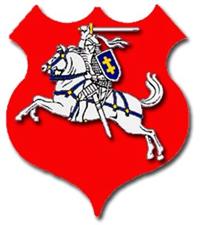
Vytis tail up or
Vytis tail down?
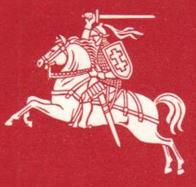

Rimgaudas Vidziunas
*Question* Vytis tail up or Vytis tail down? Have you ever noticed? Can anyone answer the symbolism? Thank you...

Irene Simanavicius Hmmmm..scratching my chin. The one I have at home the tail is down. what does it mean?

Frank Passic Even horses have to relieve themselves....

Darius Udrys Quick! Who can think of a discussion that would be an even bigger waste of time?

Darius Udrys Quick! Who can say something even more bathetic?

Darius Udrys Quick! Who should consult a dictionary?

Darius Udrys Who made you the boss of the internet?

Darius Udrys http://www.balsas.lt/m/naujiena/572579

Lietuvos žvaigždelės ir krūvelės | Balsas.lt mobili versija
www.balsas.lt
Šįmet kalbėta, kad statinys labai svarbus – juk Lietuva 2013 metų antroje pusėje pirmininkaus Europos Sąjungai (ES).

Bernard Terway Darius - what kind of a point are you trying to make? Your comments are simply stupid. I can think of something more "bathetic" in a split second. That is you.

Darius Udrys Oh, what wit! It's been a while since I've heard one from the "yo mama" series of rejoinders.

Merry Kay Aldonis I learned that whenever you see an elephant with his tail up, it meant either good luck or something very strong and vigor about it.

Merry Kay Aldonis I have a Lithuanian/English Dictiionary, but it does not say anything about tail

Virginia Pudinas Schoenfeld It's the elephants trunk Merry Kay. Not his tail. I think the tail on the horse just depends on the artists mood.

Merry Kay Aldonis Virginia Pudinas Shoenfeld you are ABSOLUTELY Correct!!

Merry Kay Aldonis In penmanship and writing analysis, they used to say that if you ended sentences or signatures with the last letter curving upward, always meant more of a positive nature.

Vytas Levickis After Independence there was confusion in Lithuania when the Vytis was depicted with the tail down. Now officially the Vytis has its tail up. This is the opposite to the Belarus Pahonia, the official coat of arms of Belarus from 1991 to 1995, which is nearly identical to the Vytis, but has its tail down. Both depict a charging knight on horseback

Darius Udrys My coworker says that in high school her history teacher made them discuss this issue and it was even a question on the test. Super. Next, why don't we discuss whether the left rear hoof should be ahead of or behind the right one?

Vijole Arbas then there is the question of the angle at which the knight holds his head high.
- Bookmark :
- Digg
- del.icio.us
- Stumbleupon
- Redit it
- Posted by - (0) Comment
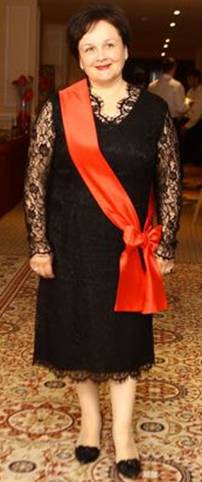
Laima Andrikiene as opposition leader?
Lithuanian MEP Laima Andrikiene has also decided to vie for the position of chairman of the largest opposition party Homeland Union – Lithuanian Christian Democrats.
„It was not easy to make up my mind but I don't want to and cannot disappoint people who trust me as I received 88,840 priority points during the 2009 EP elections. This number of citizens of our state wanted me to represent them in the European Parliament. Compared to the 2004 EP elections, the number of my voters increased by over 18,000 (18,556), or 26 percent! I was elected into the European Parliament after receiving 70,284 priority points,“ Andrikiene said in a statement sent to BNS.
Read more...
- Bookmark :
- Digg
- del.icio.us
- Stumbleupon
- Redit it
VilNews e-magazine is published in Vilnius, Lithuania. Editor-in-Chief: Mr. Aage Myhre. Inquires to the editors: editor@VilNews.com.
Code of Ethics: See Section 2 – about VilNews. VilNews is not responsible for content on external links/web pages.
HOW TO ADVERTISE IN VILNEWS.
All content is copyrighted © 2011. UAB ‘VilNews’.

 Click on the buttons to open and read each of VilNews' 18 sub-sections
Click on the buttons to open and read each of VilNews' 18 sub-sections 

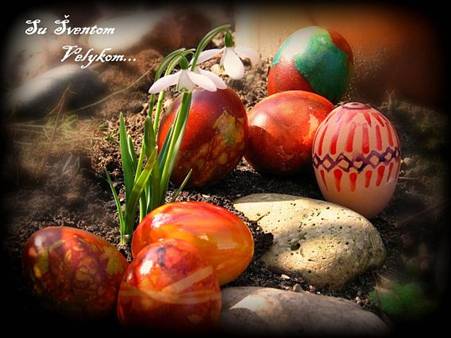


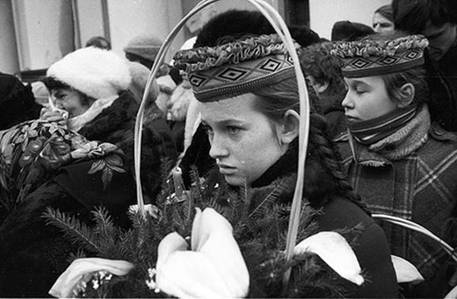












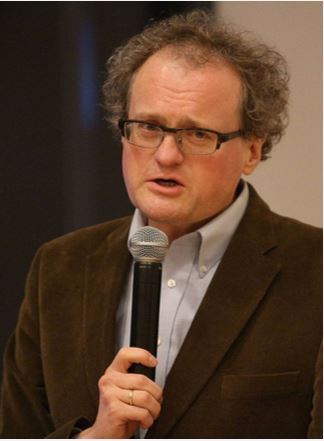
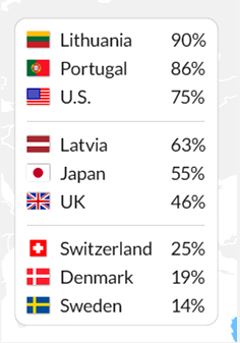
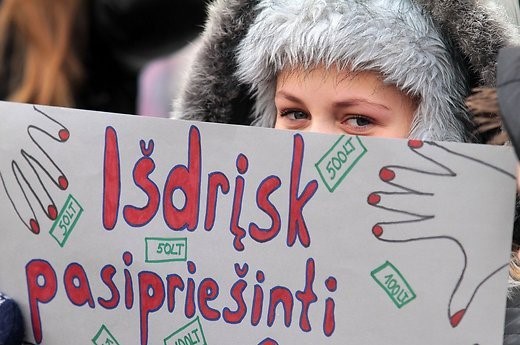


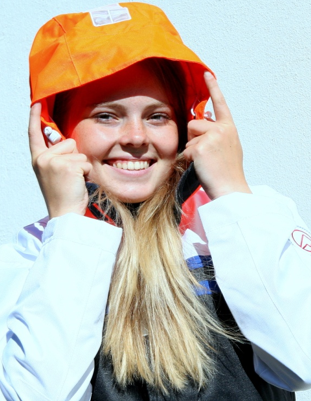
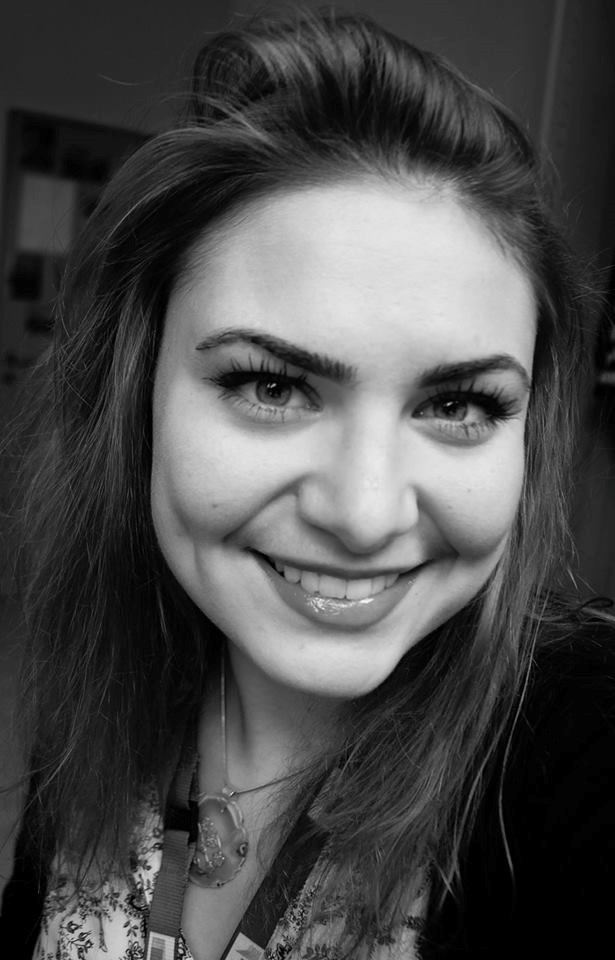
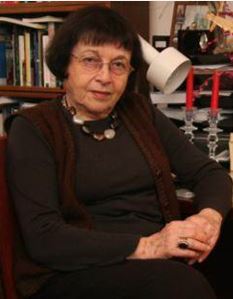
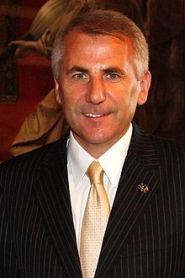
.jpg)
